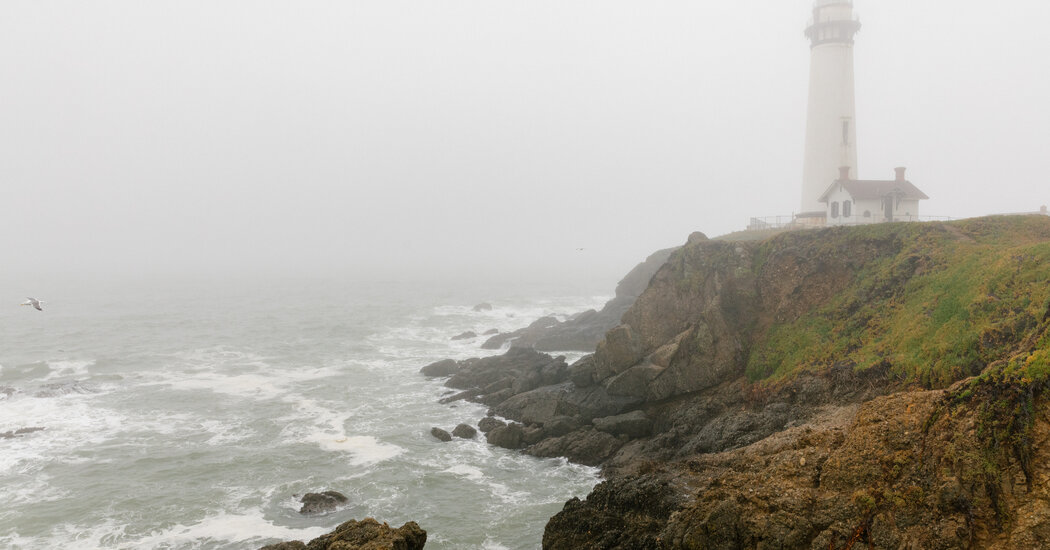It turns out that Pigeon Point was Whale Point until the Carrier Pigeon ran into it.
That was 1853, and the Gold Rush had begun with a bang, sending dozens of ships a month toward this hypnotically beautiful and rocky stretch of the California coast, 50 miles south of San Francisco. It would take several more shipwrecks before a lighthouse was built here, in 1872, to keep other marine vessels from running aground en route to the Golden Gate.
Today, Pigeon Point Light Station is protected as a California state historic park and a dark-sky preserve, and three of the light station buildings, once used by Coast Guard families, are now run as lodgings by Hostelling International. A strange perk of Covid is that you can now rent the entirety of one of these, which sleeps up to 15, for a discounted rate.
One weekend in early March, my husband, Matt, our two kids and I drove from our home in Berkeley to meet friends at Pigeon Point. From land, the approach south along Highway 1 past the rural farming community of Pescadero is a crayon box of color. First, golden fields of mustard. A parade of pale sand beaches: Pescadero, Pescadero Point, Bean Hollow.
Pescadero is Spanish for fishmonger — the coast is dotted with fishermen fiddling with poles planted in the sand. In between beaches, darkly verdant cypresses tilt obliquely, the cool sea-foam green a glint through the trees. Then the whole coast opens up in a dramatic curve of steep and rocky bluffs, anchored by that white brick lighthouse, tied at 115 feet for the tallest on the West Coast, a sentinel on the point.
As soon as we arrived, a great blue heron strutted past. Then a hawk flew overhead, a feathered kite suspended in the updraft off the Pacific. Between our friends and my family, we were five adults with six kids between the ages of 8 and 12. After we had unloaded our belongings at the hostel, the first order of business, it being low tide, was to head down to Whaler’s Cove to inspect life in the intertidal zone.
There’s something essential about the game of patience that’s required to unlock the treasures of this coast. Access is permitted by the ebb and flow of the tide; you have to wait for things to reveal themselves, at their own pace. A white-beaded orange starfish here, a clutch of mussels there. A turquoise anemone deciding it’s ready to open, flowering for a glamour shot. A single palm-size vertebra, its central lacuna heart-shaped, had us wondering about its origin story. (What, and when?)…
Click Here to Read the Full Original Article at NYT > Travel…
